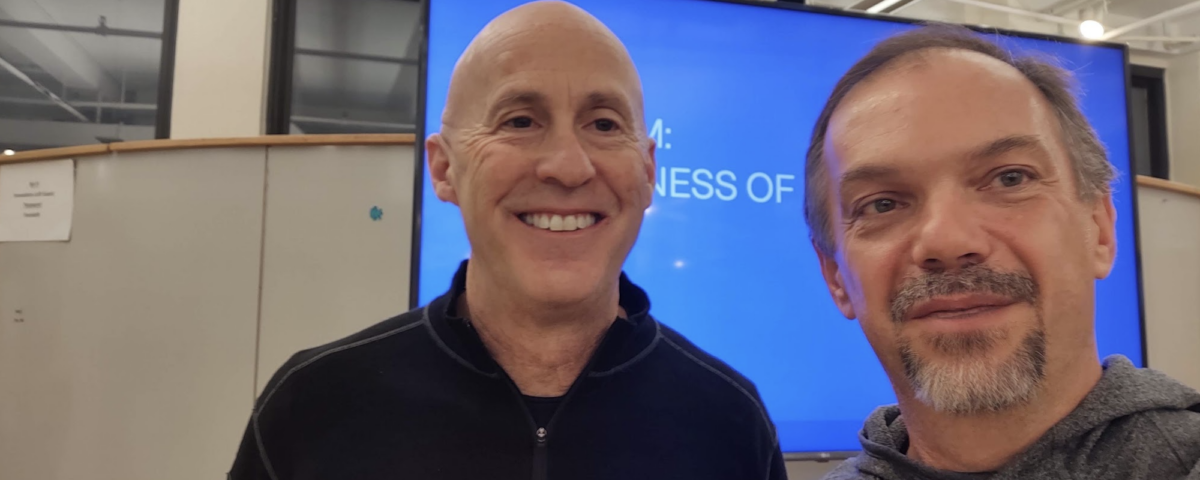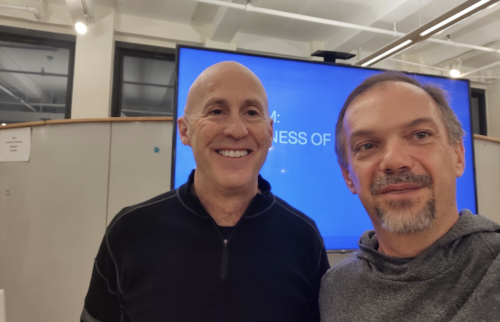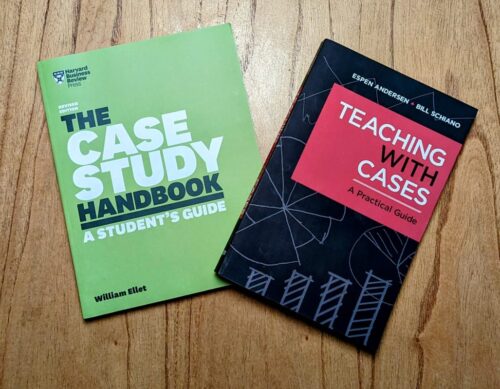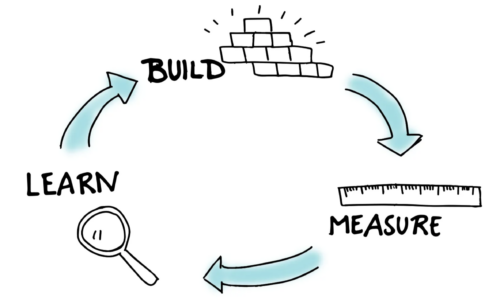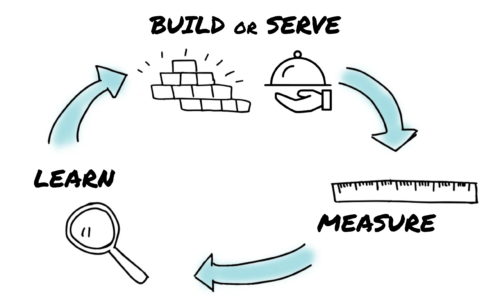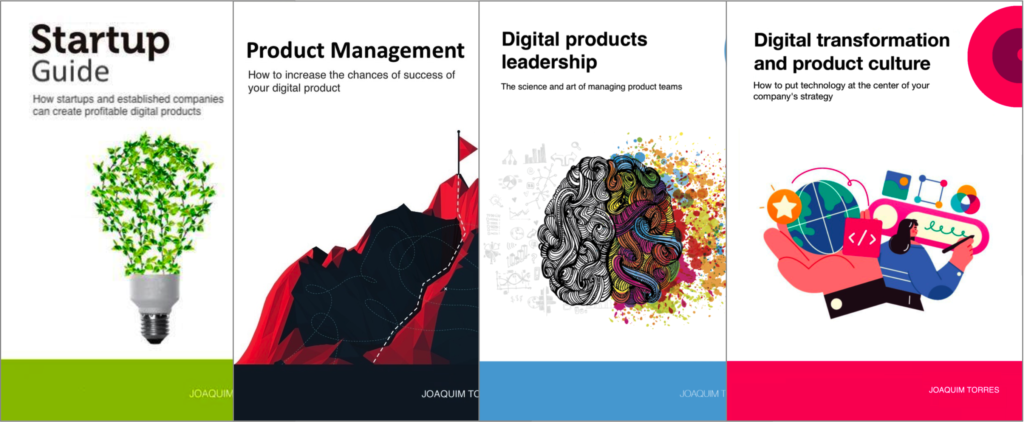
Measuring and managing the productivity
16 de April, 2024
Case study: Dasa Group
30 de April, 2024With this article, I open a new topic I want to address here: the topic of my “new” startup, Gyaco. I put the word new in quotation marks, as the company has existed legally since March 5, 2013, and I have provided product management consultancy services since then. Even before, at the end of the 2000s, I had the opportunity to help Aurum, a pioneering company in legal software development in Brazil, create a new product using product management concepts, principles, and tools. If you want to know more about the Aurum case, you can read this interview and this article, in which I talk about how technology companies may even need digital transformation.
Since mid-2022, I decided to dedicate myself full-time to Gyaco, which is a services company. So, what I offer are:
- Training services can be in-company talks, workshops, and continuing education programs on product management, development, and digital transformation. I have also been offering training open to the public in recorded form through my partnership with Cursos PM3 and live mode through my partnership with IFTL.
- Consultancy services in product management and digital transformation, which can be in different formats, such as individual or group mentoring for CEOs, founders, product and technology leaders and their teams, participation in an advisory or administrative board for companies that want to bring technology as a central theme of discussions at this level of governance, diagnosis of vision, strategy, teams and product development processes and interim partial CPO when I assume the role of CPO or CPTO of the company on a part-time basis to help the team to organize itself while we seek permanent leadership.
It is clear that what my company offers are services, not products. And here comes the question: what is the difference between product and service? Anyone who knows me knows I like well-defined terms, so here we go. Here is the definition of Service from Wikipedia:
Service is a unique set of consumable and perishable benefits that is delivered individually by the service provider to its customer according to their needs. (Source: Wikipedia)
And now the Wikipedia Product definition:
Product is an object, or system, or service made available for consumer use based on consumer demand; is everything that can be offered to a market to satisfy a customer’s want or need. (Source: Wikipedia)
By the above definition, a service is a product. This was one of my first insights when I started dedicating myself full-time to Gyaco.
My knowledge and the way I present it are the products I manage
At Gyaco, I continue to manage products, but the product I manage is not a digital product or software product but a product based on my experience, my knowledge, and the way I present this knowledge. This means that I not only can but must continue to use all the concepts, principles, and tools I present in my books, lectures, courses, training, and mentoring in the services I offer to my clients.
The person who brought this to my attention was Marty Cagan, who has been providing this type of service since 2002. Marty began his career in 1981 as a software engineer at HP, where he transitioned to product management. After almost 10 years at HP, in 1991, Marty founded and was CPTO of Continuus Software Corp, which made tools for large software development teams. This company had an IPO and was later acquired by IBM. In 1996, Marty joined Netscape as VP of Platform and Product and, in 2001, took over as Sr. VP of Product and Design at eBay. In 2002, he founded SVPG to help people and companies create incredible products. He has been doing this for more than 20 years.
I met him reading his blog in 2007. The book Inspired hadn’t been released yet. At that time, I was leading product management and development at Locaweb, and I was convinced that somewhere someone must have already experienced the problems we were experiencing in our product development. Searching for situations similar to what we were going through at Locaweb, I found Marty’s blog. After reading some articles, I was amazed, thinking that he had a hidden camera to watch us, as he was able to describe with incredible precision the problems we were going through. I ended up sending him an email saying this and asking if he had any kind of consulting service. He was surprised to be contacted by a technology company in Brazil. We brought Marty to do an in-company workshop at Locaweb to help us with a series of management and product development topics. We brought Marty a few more times to Brazil and some of the people he recommended, such as Martina Lauchengco, a technology product marketing specialist, and Marty Abbot, a technology management specialist.
Marty became a good friend, and since leaving Locaweb in 2016, Marty has suggested that I think about a career as a product consultant. According to him, I had accumulated good experience in launching and managing successful products throughout my career, and sharing this experience as he did could be very useful for many companies in Brazil. I was already starting to notice this in informal conversations I had with people from other companies’ product development teams and even in pro-bono mentoring that I gave. On the other hand, I still wanted to have new experiences, as I had in a 100% SaaS B2B startup, like Conta Azul between 2016 and 2018. However, until that moment, my experiences were in companies where technology is the product. Then I had the opportunity to work at a born-digital traditional company, Gympass, which offers a corporate benefit and uses digital to deliver that corporate benefit. I was able to help put technology at the center of this company, helping to create the Gympass Wellness digital product, which was not only essential for the company during the pandemic but also helped to expand the company’s scope, to the point where it changed its purpose from “defeating inactivity” to “making universal well-being.” They recently announced a rebrand from Gympass to Wellhub. In 2020, I was invited to lead the digital transformation of Lopes, one of Brazil’s most traditional real estate companies, founded in 1935. It was a very learning experience, and finally, after 30 years of an executive career leading product development teams, I decided to dedicate myself full time to something I was already doing, but as an extra: management consultancy and product development.
When I told Marty about this new step, he was happy, and we set up a conversation where he gave me several advices. Among them, one of the most important was:
Now you are your product! (Marty Cagan)
This new perspective has helped me a lot. Of course, it’s not “me” that is the product, but rather my knowledge, my experience and the way I share my learnings with people to help them build great products. These are my products.
Talking to customers, understanding their problems, understanding the context in which their problems occur, understanding the motivations that customers have to have their problems resolved, all of this is part of the discovery of the problem that I do in every conversation I have with each of my clients and each new person who comes to talk to me to find out more about my services.
Next comes the design of the solution. As described above, I have some service models ready, but I am always open to designing new models that might make sense for the client. All the services described above emerged in this way. They were designed as customers brought their problems and needs.
I remember one of my first clients when I started providing these services full-time in 2022. Edson Portilho, CTO of one of Itaú’s enabler communities. Itaú’s enabler communities are the communities that build technical tools and products so that the integrated communities can focus on developing digital solutions and products for Itaú’s customers instead of needing to worry about these more technical foundations. Portilho asked me for consultancy in the form of mentoring sessions to help the product teams of Itaú’s enabler communities create a vision and strategy for each of their products. Before providing the mentoring sessions, he had asked me to give product management training to the teams. My immediate reaction was that so much good training was already available in the market. I recorded the Product Management and Product Leadership training at Cursos PM3, which received excellent feedback. Why would I give training if such good training already existed? I’m glad Portilho insisted, and I created a tailor-made training for Itaú’s teams. As I was giving the training, the value of synchronous training began to become clear. In recorded training, the person can watch it whenever they want, review it several times, and increase the playback speed; in synchronous training, there is the possibility of interacting with the person presenting the content and other people in the class.
My training has evolved a lot. With each new class, I have refined not only the content but also sought to encourage these moments of interaction, which I have seen as valuable for the class to discuss the application of concepts, principles, and tools in their daily lives in a safe environment. I recently had the opportunity to participate as a student in a training in which the case study method was used, where participants had to read the case before class, and the class was centered on the case and on the possible decisions that could be made in the case. A method that causes enormous engagement, as it opens up space for people to collaborate with their experience. I have increasingly sought to incorporate this participation and collaboration of people in the training I have given.
It is the search for constant improvement of the service. I deliver my service, listen to feedback, learn from feedback, improve for next time. It’s the typical feedback loop of the product mentality applied to service provision, the famous continuous cycle of build, measure, learn:
Applying product mindset in services? Or is it the other way around?
As I move forward in the services world, I realize that I am not applying the product mindset to my services but rather realizing where the product mindset came from: the mindset of constantly improving our product based on customer feedback.
With physical products, which have long development cycles, usually lasting years, receiving customer feedback and seeing the customer use the product is more difficult and time-consuming. Furthermore, as the development cycle is long, you must collect a lot of feedback to find the majority and evaluate what makes sense to incorporate in the next version of your physical product.
On the other hand, with services, feedback from the customer and seeing the customer using the service are immediate each time they are provided. The lessons learned from this feedback and observation can and should be used as input for the next time we provide this service. That’s what I’ve been doing with Gyaco’s services. Each time I provide them, I see where I can improve them.
Technology products benefit from short development cycles and deliver early and often. For this reason, we must be in constant contact with our customers, listening to their feedback, watching them use our product, and incorporating improvements with each new delivery. This is the service mentality applied to products.
Workshops, coaching, and advisory services
I’ve been helping companies and their leaders (CPOs, heads of product, CTOs, CEOs, tech founders, and heads of digital transformation) bridge the gap between business and technology through workshops, coaching, and advisory services on product management and digital transformation.
Digital Product Management Books
Do you work with digital products? Do you want to know more about managing a digital product to increase its chances of success, solve its user’s problems, and achieve the company objectives? Check out my Digital Product Management books, where I share what I learned during my 30+ years of experience in creating and managing digital products:
- Digital transformation and product culture: How to put technology at the center of your company’s strategy
- Leading Product Development: The art and science of managing product teams
- Product Management: How to increase the chances of success of your digital product
- Startup Guide: How startups and established companies can create profitable digital products

